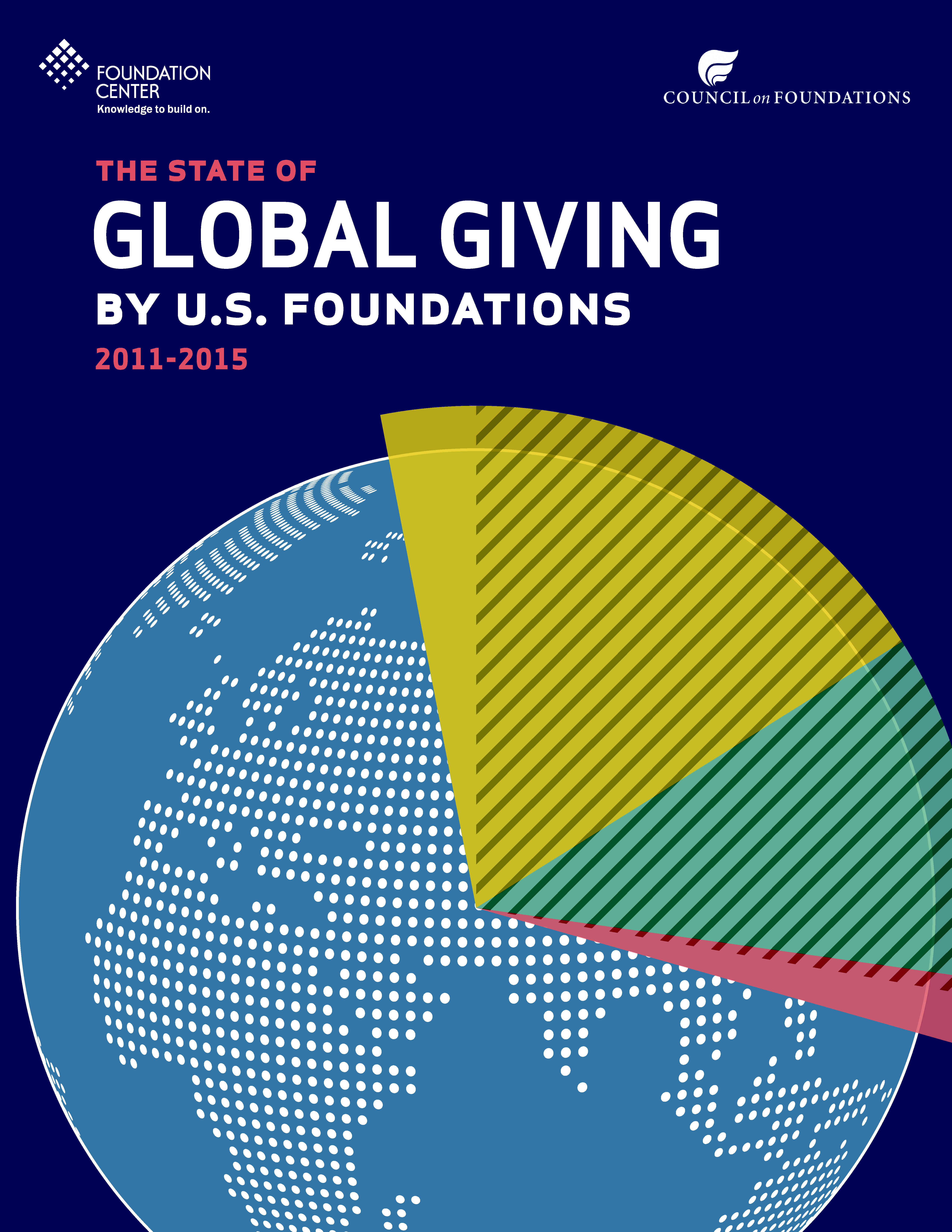Today the Council on Foundations and Foundation Center launched, The State of Global Giving by US Foundations: 2011-2015, featuring a detailed overview of giving trends by issue area, geographic region, population groups and donor strategy, presented through colorful infographics and short form commentary. We also relate the trends to key events and developments, including the adoption of the Sustainable Development Goals, the spread of Ebola in West Africa, and the increasing legal restrictions faced by civil society in countries around the world.
 In 1994, US foundations awarded $996 million for international activities; in 2015, that number grew to $9.4 billion. Clearly, even as we see growing global populism and calls for countries to turn more inward, US foundations remain committed to supporting global programmes.
In 1994, US foundations awarded $996 million for international activities; in 2015, that number grew to $9.4 billion. Clearly, even as we see growing global populism and calls for countries to turn more inward, US foundations remain committed to supporting global programmes.
We began our data analysis with a number of assumptions. In some ways we were surprised, and in others, we were spot on. Here are three things that surprised us and three assumptions that our data analysis confirmed:
Assumption 1: Global Giving by US foundations would grow dramatically from 2010 to 2015
Following the recession, global giving by US foundations dipped to $4.5 billion in 2010. From 2011 to 2015, global giving fluctuated between $5.7 billion and $9.3 billion, reaching a new all-time high of $9.3 billion in 2015, more than double the amount in 2010.
Assumption 2: International grants are bigger than domestic grants by US foundations (and continue to increase in size)
The average grant by a US foundation for domestic programmes from 2011 to 2015 was $134,500. For international grants, the grant size was more than 3 times bigger, at $482,100. This average global grant size has continued to grow over time – in 2002, it was $200,900 and in 2015 it was $604,500.
The largest grant was a 1.6 billion dollar five-year grant awarded by Bill & Melinda Gates Foundation in 2015 to Global Alliance for Vaccines and Immunization (GAVI), based in Switzerland to save children’s lives and protect people’s health by increasing equitable use of vaccines in lower-income countries.
Assumption 3: Global grants by US foundations usually flow through intermediary organisations
Calls to localize aid so that more funds flow directly to civil society groups are not a new or emerging debate (i.e. #ShiftThePower). Yet from 2011 to 2015, 28 per cent of international giving by US foundations was channeled through U.S.-based intermediaries, 30 per cent went through non-U.S. intermediaries, and just 12 per cent went directly to organisations based in the country where programmes were implemented.
Surprise 1: No correlation between closing space for civil society and where US foundations make direct grants to local NGOs
Between 2012 and 2015, 98 laws constraining the freedoms of association or assembly were proposed or enacted across more than 55 countries, many limiting foreign funding for NGOs. Yet our data does not show a correlation between foundation giving in 2015 and that country’s environment for cross-border flows score in the Index of Philanthropic Freedom for 2014-2015. Of the 20 countries receiving the most direct funding from U.S. foundations, five scored lower than the global average of 3.4 (with a score of 5 representing the most enabling and a score of 1 representing the least enabling). India is a notable example, ranking fourth by direct giving but receiving a score of just 2.1.
This challenges our assumptions about the impact of the legal environment on funding flows and suggest a more complex relationship than what we might expect. While the time period between country scores and grant years analyzed may be too short to capture shifts in funding, we still think this finding raises important questions: Why does a significant amount of funding reach certain difficult environments, and not others? Are any of the strategies and mechanisms for channeling funds to countries with difficult legal environments transferable across country contexts?
Surprise 2: International grants for education declined
While education remained one of the top funded subjects, totaling $2.8 billion and representing eight per cent of international giving from 2011 to 2015, it saw a decrease of 31 per cent during this period. This was the sharpest decrease we saw among the nine key subjects included in the analysis.
We are curious about what’s driving this decrease. If you have thoughts or theories, we’d love to hear them.
Surprise 3: Funding for reproductive health nearly tripled following Global Gag rule reversal
International giving for reproductive health care grew more than two-fold both in total dollars and as a share of overall international giving from $362 million in 2011 (5 per cent) to $1 billion (11 per cent) in 2015. This shift in funding occurred in the years directly following the Obama administration’s reversal of the global gag rule, a rule that restricted foreign NGOs from using any of their own, non-U.S. Government funds to provide, counsel, or refer for abortions if they were also receiving funds from the U.S. government for other activities. While the use of U.S. Government funds for these services has been restricted since 1973, the gag rule prevented foundations and other non-government donors from providing support for reproductive health care to NGOs that rely on U.S. federal funds to sustain other parts of their operations and programs. While we did expect to see a growth in the years after the reversal, we were surprised to see such a dramatic increase.
Natalie Ross is Vice President for External Relations at Council on Foundations
Lauren Bradford is Director of Global Partnerships at the Foundation Center
Inga Ingulfsen is Research Analyst for Global Partnerships at the Foundation Center








Comments (1)
This is the most comprehensive overview of US Foundation giving I've ever seen. Congrats to the Foundation Center team!